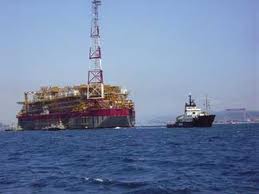Oil eased toward $66 a barrel yesterday after reaching a 2015 high, as ample current supplies and weak Chinese factory activity countered expectations of a tighter supply and demand balance later this year. The collapse of oil prices in 2014 has prompted expectations that supply growth in higher-cost crude producers such as the United States will slow. On Friday, oil services firm Baker Hughes Inc. said the number of U.S. active rigs had fallen for a record 21 weeks in a row.
US oil production falling
The meteoric rise in U.S. shale oil production has ended, easing a global glut and driving a rebound in crude prices from below $50 a barrel, according to crude trader and hedge fund manager Andrew J. Hall.
“We have now reached a turning point,” Hall said in a letter weekend to investors in Astenbeck Capital Management LLC, his commodities hedge fund. Growing demand and supply pullbacks “rendered all the doomsday forecasts self-defeating.”
Oil production from Texas to North Dakota peaked at almost 10 million barrels a day in February and has been falling since then, Hall wrote. A drastic reduction in drilling rigs is starting to shrink U.S. oil output, according to government data cited by Hall.
That’s helped drive a 36 per cent rally in the past six weeks, and prices will continue to rise because it will be harder for producers to ramp up than it was to cut back, Hall said in his letter.
Lower crude prices have also boosted demand, while the risk of supply disruptions across the Middle East is growing amid sectarian tensions. West Texas Intermediate, the U.S. benchmark crude, settled at $59.15 a barrel Friday, marking a 3.5 per cent rise for the week. It fell 33 cents yesterday to $58.82 a barrel.
Astenbeck funds were up more than 10 per cent through April, and gained 10 per cent in 2014 even as oil fell by more than half, according to people familiar with its performance, who asked not to be identified because the information was not public.
Known for making aggressive bets on rising oil prices, Hall became renowned in 2009 after being paid about $100 million while at Citigroup Inc., a bank that received government assistance during the financial crisis. For more than two decades he led Phibro, a commodities trading company bought from Citigroup by Occidental Petroleum Corp.
The EIA has predicted that oil output from major shale plays would begin to decline in April. Total average daily U.S. production will peak this year in the second quarter before falling by 210,000 barrels in the third quarter, the agency said in a report last month.
Oil Adjustments
Hall says the EIA data is derived from estimates at state agencies that generally lags months behind, making it “essentially an artifice.” A more accurate gauge of U.S. output is an “adjustment” the agency uses, which, in addition to the weekly number, adds up changes to how much oil is in storage, how much was used in refineries and how much was imported and exported, Hall said.
Paul Sankey, an energy analyst at Wolfe Research, also cited the trend in a report Thursday to investors. The amount of production that isn’t accounted for has fallen “dramatically” in the last two weeks, suggesting U.S. daily output may have fallen by as much as 200,000 to 300,000 barrels in April, he said.
“That number seems high to us, but it does support the notion that U.S. production is rolling over at present,” said Sankey, a former analyst at the Paris-based International Energy Agency.
Brent crude the equivalent of Nigeria sweet crude slipped 15 cents to $66.31 a barrel after hitting a 2015 peak of $67.10. U.S. crude lost 23 cents to $58.92. The U.S. benchmark hit its highest this year at $59.90 on May 1. “The market is expecting the tightening in the second half of the year,” said Eugen Weinberg, analyst at Commerzbank.
“We argue this dynamic is hardly fundamentally sound,” he said of the market’s rally.
A public holiday in Britain yesterday limited trading volume. Brent has rallied more than 40 per cent from a near six-year low of $45.19 in January, supported by expectations of tighter future supply and demand balance, as well as a weaker dollar and Middle East tension. A business survey showed activity at China’s factories shrank in April at its fastest pace for a year as new orders fell, hardening the case for policy stimulus to boost the world’s second biggest economy.
“The Chinese data is weaker but it seems the oil market has had a limited reaction. What the market really wants to see is supply being cut to match the demand level,” said Ric Spooner, chief market analyst at Sydney’s CMC Markets. Oil’s collapse in 2014 was due to ample supply and the refusal by the Organisation of the Petroleum Exporting Countries (OPEC) to cut output. OPEC shifted its strategy in a bid to slow competing supply sources, such as the United States, to defend its market share.

